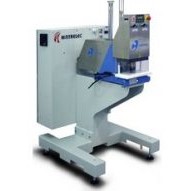Welded eyelets
Welded eyelets: presentation
Grommets can only be welded if the material they are made from is compatible with the material on which they are to be permanently inserted, so as to form a solid and resistant unit (tension, pressure…).
The term “welded eyelets” refers to a very specific case, where the eyelet is integral with the material (usually textile) to which it is attached.
The term “welded eyelets” is sometimes misused to refer to the fitting of metal rings on clothing, curtains or protective tarpaulins, but this is not the case.
The techniques used for these assembly operations are :
- crimping with a specific type of ring, the crimping eyelet,
- manual (hammer) or automatic (specialized pneumatic or electric press) striking,
- Punching of fabric and textile supports, followed by installation of eyelets and washers using pneumatic pressure.
In conclusion, only eyelets made from heat-deforming plastic materials (thermoplastics) can be considered as rings that can be welded to similar substrates.
These eyelets serve as the basic elements of the fastening or suspension system for different families of products or materials. These range from event and camping tents (marquees, barnums, marabouts, tents…) to advertising banners (beachflags, flags, banners, signs, kakemonos, banners…), safety and protective tarpaulins for buildings under construction or for transport vehicles, fashion accessories, shoes and clothing. Welded eyelets are also widely used for home textiles (curtains and blinds, house curtains, shower curtains, etc.), parts and accessories for transport or vehicles (grommets, sheath grommets, cable grommets, etc.) and deck fittings (pleasure sails, etc.).
What are the characteristics of thermoplastic grommets?
What are known as plastic eyelets are actually PVC eyelets, due to the technical characteristics of this material.
The strengths of Polyvinyl Chloride rings are as follows:
- sturdiness ;
- flexibility ;
- plasticity (do not break) ;
- weldability ;
- the upgrade of metal rings in terms of strength and flexibility (capable of withstanding greater tensile forces);
- high resistance to harsh environments (difficult climatic conditions, exposure to UV rays, etc.);
- They are not susceptible to rust and leave no trace;
- the absence of folding during fastening ;
- available in a wide range of colors;
- the possibility of a single layer of vinyl;
- Invisible” positioning of eyelets on the back of banners, tarpaulins and building cladding (on fabrics and sheets).
These technical and aesthetic features of plastic eyelets enable us to meet the specific needs of companies in a wide range of sectors.

What materials are used to make plastic eyelets?
Plastic eyelets can be used to create high-performance hangers and fasteners. They are made from a variety of thermoplastic materials:
- PVC or Polyvinyl Chloride;
- PE or Polyethylene;
- PP or Polypropylene;
- EVA or Ethylene Vinyl Acetate;
- ABS or Acrylonitrile Butadiene Styrene.
The choice of raw material used to produce fastening rings depends largely on the intended use. As for the manufacturing method, it will be chosen according to both quantitative and qualitative production objectives. At Matrelec, we design and manufacture a range of reliable, high-performance high-frequency presses for eyelet welding operations.
What techniques are used to weld eyelets?
Various techniques can be used to weld “plastic” eyelets, after punching the surfaces to be fitted with rings (textiles, canvas, tarpaulins, etc.).
The following methods are used to attach the eyelets to the supports to be equipped:
- The rings are bonded using adhesives made of polyvinyl chloride particles;
- Clip-on rings belong to the very specific category of clip-on eyelets ;
- High-frequency welding to produce welded eyelets, with the creation of a thin joint resulting from the fusion of the materials making up the two elements to be joined.
However, the latter technique is the most widely used, as it also offers better results in terms of both aesthetics and functionality. To meet the capacity requirements of industrial companies, Matrelec designs and manufactures high-frequency welding presses capable of fast 2-sided ring welding, with an automated supply system. This makes it possible to meet high production targets for HF-welded eyelets, thanks to very high output rates.
